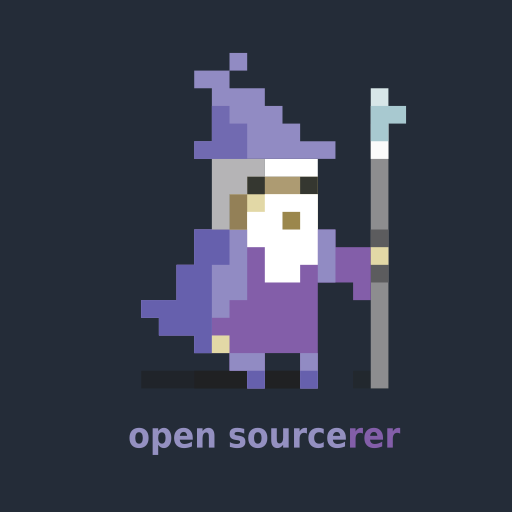The best one I’ve ever heard is they like the Microsoft wallpapers. Yes i told them you can use them on linux too. But they argued with me that they wouldn’t be compatible.
A friend of mine finally decided to heed my advice and try it out. He successfully installed fedora and was pleasantly surprised by the ‘clean’ design (of gnome). He then enabled his Bluetooth headphones and DMed me that they won’t connect. The BT menu wouldn’t show them.
Now, I wouldn’t call him stupid, so I committed a grave sin of troubleshooting when I decided to not offend his intelligence. We hopped on a call and started debugging. Looking at drivers, support for his hardware, logs for any errors… He didn’t have another device to connect through BT at the moment and I was out of ideas, so we called it a night and decided to try again tomorrow.
By the time we reconnected the next day, he had already reinstalled windows, but was suffering from the same issue.
And then it downed on me… “Did you pair your headphones?” I asked, afraid of the answer. He just blinked twice and the “what do you mean?” hit me so hard I couldn’t even laugh. “I’ve never had to do that before…”
Some painful explanations later, or an argument really, and his headphones were paired. But by that time he had had enough and didn’t want me to bother him about Linux again. Needless to say, pointing out it was his misunderstanding of the technology that ultimately led to this outcome didn’t really help.
This memory still injects fury in my veins as I fall asleep, right there with fumbling my words when speaking with my highschool crush…
“I’ve never had to do that before…”
Not trying to shit on the guy, but like, that’s literally the first thing you do with BT anything. 😄
I guess that really depends on the equipment though, some devices when you turn it on for the first time will automatically enter pairing mode, so all that had to be done is click it in the bluetooth menu, but it might not auto enter pairing mode when you turn it on after. So it’s unlikely the user ever knew they were pairing it, and just clicked through the prompts like many do
Yeah, no, of course. But that’s kinda my point: there was still an initial pairing. I’m not trying to be antagonistic or anything. I just find it a bit silly that one could research how to replace their entire OS with one they’re not familiar with but not realize they’re gonna have to re-pair their BT devices.
Then again, I think we’re all guilty of sometimes missing small details. I once put a PC together for a buddy and couldn’t figure out why it wouldn’t post only to eventually realize I was a dummy who forgot to plug in the CPU power. 😂
We all have been there. First technical build I struggled for 45 minutes trying to figure out why I was getting a zero display whatsoever only to find out that I plugged that damn HDMI cable into the wrong port, and the board had disabled everything including post and splash from using the motherboards port
He was able to install Linux and Windows but couldn’t figure out how to pair a Bluetooth device…
TBF Bluetooth sucks a lot. To this day I need to power cycle the phones Bluetooth connection and headphones connect button a few times for it to pair properly some times. Different brands and headphones, silly different issues for all. Want to use your headphones for more that a phone and laptop? Maybe on a third device like a TV or desktop? Fuck you.
People blame everything on whatever the last change was
Went to the mechanic for an oil change and now my AC doesn’t work? The mechanic must have fucked my AC while changing my oil!!! 1!1!1!1
All while claiming they did “nothing” when they f-ed up themselves.
Around '98, a tech support guy got a call that their application didn’t work anymore. He tried to troubleshoot, but the system was a mess. “Did you change anything since yesterday?” - “No, we didn’t!”.
What they did do, though, was running the Win98 update the day before. Which, at one point, after doing lots of things, complained that it could not continue for some reason, and offered to “undo” the changes…
I find a big part of trying to be the friend that transitions others to Linux is taking on the role of mentor. It’s something a lot of wish we could just hand to someone and dust off our hands, but that ultimately leads to experiences like yours.
For a better chance of success, especially on first install, be on the line with them as they go through the steps, or in person is better yet.
Answer all the questions you can and help them install all their usual stuff. Most people don’t want to have to go through this change, so making it fun and social goes a long way.
Indeed that was my intention. I just never thought that he wouldn’t be familiar with something so ubiquitous in today’s world, so I didn’t even think to ask. That’s why this situation is so infuriating to me, not so much that he didn’t know, but that my assumptions prevented me to resolve it
We regularly believe that, because we know, everyone else knows, and that’s a failure I’m extremely guilty of. I gave my sister a Qnap NAS about 6 years ago and told her to just plug it in, plug in the land cable and set it up. 2 years after that she calls me asking for info on a data recovery service for her Mac. So I asked her why she needed data recovery, that’s what the NAS was for. Well, she did what I told her, but never configured backing up her files.
So, yeah, now I assume everyone is ignorant and pass for arrogant some times over explaining.
Most people’s reasons in my experience demonstrate to me that they have a perception of Linux as it was 15+ years ago.
I discussed switching to Linux with a group of friends in a voice chat some time ago, most were fairly open to it, and one or two have switched since, but mainly their reasons were time constraints, not wanting to go through the process of backing up files, and finding alternative software.
One guy in particular brought up gaming, MS office, and some other particular software they used. I showed them protondb and every game they looked up was gold or higher, showed them libre office which they could not complain about since it generally works a lot nicer, and it turned out that other software was available as a .deb. After all of this, the reason they gave me was “but I like Windows”.
Fair enough I guess, though they couldn’t really produce the reason as to why.
Generally, people just don’t like any kind of change, even if it has the potential to make them a lot happier.
not wanting to go through the process of backing up files
This was a big thing when I was helping some people with Windows 10s EOL, A lot of folks just don’t have a 2nd drive to back stuff up onto.
As a compulsive data-hoarder the idea of having everything on a single drive with no backup plan, local or “cloud” based… Terrifying! You could write a horror movie about it.
I just quasi ran into storage issues. have 1 qnap with 16tb raid1… NTFS
I can’t for the life of me get it to connect to Linux, detects it being connected, won’t display as a drive.
I stupidly installed bazzite, which is stupidly restrictive (so I’ve learned) on fstab… found out after I had to boot into grub to edit fstab back since it wouldnt let me edit the file since bazzite revoked me root access? ok… that was the deal breaker for me (with bazzite, not Linux)
Okay hear me out… When you say all those words in a sentence, I have honestly no idea what you are saying. But furthermore it looks like it didn’t work (or so I think). That is the reason why people (me included) don’t dare to switch
It looks like a hassle, it takes time to learn, people don’t want to back up 2 their files (I know, I don’t get that either), they don’t want to think about “bazzite” or “fstab”, partition the drive for dual boot or search hours looking for a solution.
The people with no or limited knowledge about computers want to open their laptop, start edge or chrome (I know I know) and watch cat movies on Instagram.
I really wanna make the jump, but the unknown with all possible hassle is holding me back.
And apparently mint is super easy, but it will take time and courage!
People like to recommend immutable distros like bazzite because in theory they’re much harder to break, but in reality they are a niche community and are nowhere ready for primetime for casual users
can confirm. I can understand how to make things work as I need it to in Linux, but I figured I’d try bazzote because people were saying how great it is. knowing how to manipulate Linux how I want, and using bazzite because very annoying because of the restrictions which I didn’t read about before hand. I wasn’t blaming Linux as a whole, just bazzitr specifically for trying to protect me. essentially they let me break it, but wouldn’t let me fix it.
Really it depends what you use your computer for. If you’re a casual user, and all you do is browse the web, watch videos, and play games, the transition is no worse than moving from Windows to Mac. There are some small quirks to get used to, but anybody should be able to figure out 90% of it in a matter of minutes.
Well, except you don’t need to pay hundreds of dollars for the Apple thing. That’s a steep transition to me.
When you say all those words in a sentence, I have honestly no idea what you are saying.
ya know. I’ve read this a lot directed at me… I clearly have a communication issue. I’ll reread everything and try to figure myself out .
I understand your words but I also get this. Guess we are the same 🙃
It surprises me that there are users like that that haven’t yet gone through some kind of major data loss event. Or maybe they’ve only used a computer for a couple years…
Edit: not those with archives, those with a single disc of course.
If you ever talk to someone who’s worked in a place offering data recovery. They’ve probably met a lot of people who’ve gone through exactly that.
After all of this, the reason they gave me was “but I like Windows”.
This is the response I normally get as well, which infuriates me to no end, because it isn’t an actual reason, it is ultimately their decision, and I feel like they are making a mistake out of laziness or perceived comfort.
Whenever they say “… but I like Windows.” I’m like: Ah so you like CandyCrush ads on your homescreen. Got it. Yeah who doesn’t like to look at some ads first thing in the morning.
“but I like Windows”
I can’t imagine any better reason to use Windows than that.
but they don’t know the alternatives
like a child who only eats one type of food but never even touched othersI still can’t imagine any better reason.
because you haven’t tried the alternatives
tbf it is hard to try new things, especially initially
It’s my opinion that most people think of all the technology as it were 15 years ago. Apple was innovative, Google wasn’t evil, Windows worked well, and Linux was not as accessible as it is today.
I had two bouts with Linux in the distant past, and neither time did I think Linux was anything worth pursuing. Not that it was bad, I just didn’t see a benefit over the alternatives. In fact the alternatives had all the benefits in my mind.
When I switched a year ago, I was blown away how far it had come as far as being accessible. Now I can’t imagine using Windows as my primary OS ever again.
I think for the MS Office thing, it depends on what it’s being used for. If it’s just creating a fresh document or editing a simple existing docx, LibreOffice it totally fine; I’ve heavily exclusively used LibreOffice Writer during my time in college and been okay, as I’m either just writing in MLA or using a provided Word file that I can then just save as an ODT after initial conversion and export as a PDF when it comes time to turn it in.
However, from what I can tell, if you’re working in an organization that extensively uses MS Office, files may need to survive multiple openings and edits between multiple editors, and multiple cycles of translating between document representations can lead to degraded documents and just make your work life absolutely miserable. Thus, LibreOffice isn’t an option, though I hear there are more MS-compatible suites that are usable on Linux, though not all of them FOSS.
This is why I’ve so far left my mother alone about Linux; maybe if I saw some evidence that her workflow would be more amenable to LibreOffice than I think it is, I’d reconsider.
I just had the damnest experience with Office. Some institution required me to deliver a “doc” document with it’s respective PDF. I’m a Linux user, so there was gonna be some trouble. This document was viewed and edited by several instances, so I decided to use an online tool. Google Docs it was, but this was before the doc requirement. So, after the fact, my solution was similar: to just use the online version of Office, which I had access to through my job. Cool. Well, no. Delivered the document and the doc wasn’t consistent with the Office desktop they were using. Long story short I had to figure out their Office version and borrow a computer with the same Office desktop version they were using, pirated, of course.
My experience with LibreOffice is it works fine if you’re doing straightforward things by yourself. MLA formatted essay? “Twelve point double-spaced Times New Roman or you get a zero” and they never noticed my papers were Liberation Sans? Sure that works. “Pick a partner and make a 20 slide PowerPoint presentation” is a nightmare because sharing files back and forth between Powerpoint and Impress doesn’t work very well.
The more usable solution to that is Google Docs. I had a group project with four other guys, and we were all sat around a table typing in the same document at the same time on three different operating systems. Played perfectly well with Windows, Mac and Linux. Us Linux nerds who hate “the cloud” because “someone else’s computer” and Google because “
Don’tBe Evil” kind of lurch at that one, but it functions.
Some years ago, mentioning Linux for daily non-gaming use:
Guy: “Installing Linux is complicated though”
Me: “It wasn’t bad 10 years ago, and now it’s as hard as clicking Next a few times, even faster than Windows”
Guy: “Well duh, you have ten years of experience installing it!”
Difficult to argue with this non-logic.
My almost 70yr old mother installed mint herself. Her tech literacy level is Word Processing with a dash of Solitaire.
“Never used Linux,” They say, typing on a chromebook or android phone, before picking up their steamdeck.
while browsing the web (hosted on linux).
Not to interject, but when people talk about using “Linux” they’re generally referring to desktop Linux (usually GNU/Linux). ChromeOS and SteamOS are Linux distros of a sort under the hood, but they’re also highly curated experiences. Android technically uses the Linux kernel but architecturally it’s so drastically different from basically any other system using it that it’s quite misleading to call it “Linux” in the colloquial sense.
If it came pre-installed on laptop majority wouldn’t mind.
That’s really the crux of it. M$ bought in back in the 80s and people are too damn lazy to change their defaults.
Devil’s advocate here. When people complain about phone calls, or going out in public, or being social, I think “it’s not hard.” I know for some people it is a massive hassle.
Apply that same sentiment to having to learn an OS that is irrelevant to your job or seems difficult or you’re not interested in.
”You can’t trust free software”
My grandfather’s reason for it. “It will be too different from my current system”
… the only thing he does is the web browser, and bookworm deluxe which i have confirmed does work via wine. I was recommending him install an OS called q4os, which I have on my laptop, I showed him the side by side comparison of q4os vs windows. For a point of reference this is what q4os looks like

I think he is too scared of change.
I still don’t know how Wine works and I’m a Linux advocate.
It’s pretty simple actually. Mine runs the program as it would normally and whenever the program reaches out to say “create this file” or “load this font” for example Wine will grab that call and translate it into a Linux OS command. As long as the program gets all their Windows API calls and windows specific files requests satisfied it will happily continue.
This is why ARM support is such a hassle for wine since the processor is with a different architecture so the compiled binary needs to be translated as well with all the nuances.
I have never managed to get any exe to start with wine and god i have tried. I have no idea why it never works but a menu comes up and i can choose a lot of stuff, nothing in there works so i have just given up. Putting things and run through steam is stupid but works so i just run everything through steam 😂 Wish I didn’t have to.
Being in this same boat with wine, and my ever-growing hate of Windows is what made me stay in Linux and never look back. I’ve been using everything linux-native for the last 9 years, and not once have I thought of using Windows again.
I do, however play games in Linux, ever since my wife got me a steam deck for my birthday 😁
Wine has some compatibility differences between its versions — I’ve had to downgrade it before because the newer version didn’t work with the app I wanted. So, if you’re ever in the mood to try again, you could check out an older version, and perhaps try launching a simpler app like notepad which is iirc supplied with Wine.
Also, Wine launched from the command line, with the exe as the parameter, usually prints a lot of stuff some of which may say what libraries weren’t found, and
winetricksallows installing those libraries easily (if it’s still around, I haven’t done this in a while). Typically something like ‘MS C++ redistributables’ or the .NET framework is necessary.
yea but he wouldn’t need to handle that, I do all his setup, he just has to click the shortcut that opens the game just like he does currently.
It translates Windows API calls to X and POSIX API calls. Theoretically it comes with a performance hit but as benchmarks have shown that is usually not the case as both Wine and the entire system as a whole are more efficient than Windows. Wine will fail whenever an application requests an API call that is not implemented yet, sometimes copying DLLs from Windows helps, sometimes…
I’m still not great with Wine myself, but sit down for an afternoon and try out Bottles. https://www.howtogeek.com/running-windows-apps-on-linux-with-bottles/
I’m on Arch and even the wiki just recommends using the Flatpak. It’s pretty obvious once you get the hang of it, each Bottle is just it’s own little, specific Windows configuration. Try running through the example on that site and installing Notepad++ (or something else of your choice) and you’ll probably have an a-ha! moment.
That’s on you
my parents were open to try it, and theyre still happy they didnt have to buy a new win11 laptop
Why you out there telling people to install it? Those who want it will find it. This isn’t an evangelical mission.
Isn’t it?
The arguments of preference and convenience are falling by the wayside as megacorporations take more and more control over not just your hardware but your behavioral patterns by dictating what you can install and how it functions. They suck up all your personal, private data for AI training without your consent.
I get it, shit sucks. It really does, but we have to remember who is to blame here and it’s not each other. There has to be some urgency here because this is a battle and we, the consumers, the ordinary people, are surely losing. It’s not about being holier than thou, it’s about lifting each other up.

If Linux gets popular the mega corps will just follow them there and then you’ll be asking them to uninstall Dell os or at least remove the Linux recall (powered by bing) that it comes bundled with. Just look at the modern state of android.
Android is the way it is because Google is close sourcing more and more of what makes Android useful as a mobile OS. It would be infinitely harder for some megacorp to do the same thing for a desktop OS.
This. I don’t mind what other use, nor I feel the need to be annoying AF telling them what they should do.
Yeah like, holy shit the pseudo religious bullshit here is getting annoying. I like Linux, I am supremely unlikely to ever even touch a windows system again (minus the occasional time where I might have to for work when accessing client systems) but this weird cult behavior is aggravating.
Do you have just a few minutes to chat about our lord and saviour Richard Stallman?
Can’t, whenever Stallman comes up I have to think back to the time where he while on stage, pulled something off his foot and ate it.
Eat of this toenail, for it is my flesh. Do this in remembrance of me.
Zomg, I just lol’d so loud at this.
This was quite a few years ago, but a friend of mine said he’d tried Linux but had switched back because some clipboard feature he was used to using didn’t work (sorry, I forget the details). He was a programmer to, so perfectly capable of troubleshooting or finding some alternative tool. I just stared at him dumbfounded.
Sadly its really hard to change habits. But it goes both ways, every time I need to use windows I find myself grunting for every minor thing that doesn’t work as expected.
I get him though, mouse wheel click for a secondary copy buffer is one of the main things that’s extremely annoying to me when I have to use Windows, I can never retrain my brain to stop doing it and I get annoyed that it doesn’t work until I remember why.
The whatchacallit, terminal with super cryptic commands is too hard. When I go on the internet and say my system has a problem and they tell me to type sudo pacman -Syu, I need something more easier than that. You know like-- with more steps. And five modal GUIs. And buttons.
“Lack of consensus on pronunciation of name.”
And I stand by it.
Hello, this is Linus Torvalds, and I pronounce Linux as Linux
Agreed. But it does make it easy to tell evil Linux users from good Linux users. I pronounced it so you can tell who is who.
I’m so glad you agree that Linux users are the evil ones.
Obvious, right? Only an evil person would say it that way.
“Linux isn’t made for professional use” - Colleague from Work who is an Apple stan. And yes he bought the Apple™ Cloth for iPhone.
What if the browser doesn’t work? It will work.
my motherboards drivers don’t come with windows, and so when i tried to install it and it forced me to connect to the internet, i just couldn’t. luckily i found a usb dongle to ethernet which worked ootb.
never had a weird mono driver issue like that on any linux distro i tried.
I did because the laptop I had bought had a brand new processor and not all the drivers were in the kernel version that was in the distro’s newest ISO. I had to plug in a keyboard, screen, and network adapter to install the right kernel.
A surprising amount of people have put up this mental wall separating “SteamOS” from Linux.
I’ve had this conversation with multiple people and it’s being brought up again because of the Steam Machine announcement.
Some (very few) legitimately didn’t know SteamOS was a Linux distro, Or they knew it was based on Linux but thought it used a whole different user ecosystem. Like how Android is technically Linux but using it is nothing like using desktop Linux. These people I’ve found are more willing to actually look into Linux after someone’s explained to them that SteamOS is just Linux. And that there’s even SteamOS-like Linux distros you can use right now!
Then you have those who are hard-line about having Official SteamOS. And most of the time they have some misguided believe along the line of, SteamOS is Linux but Valve has fixed all the “Linux issues”. And for a lot of them you’re probably not going to get far convincing them that mainline Linux isn’t just endless command lines these days.






















